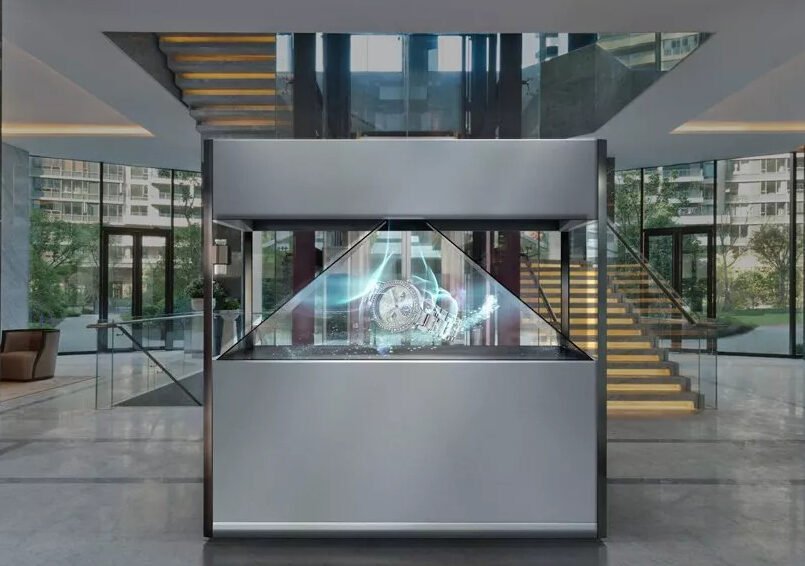Holographic display showcases are innovative devices that create the illusion of three-dimensional (3D) objects or holograms floating in space. They have gained popularity in various industries, including advertising, entertainment, retail, and product showcasing. These showcases typically utilize a combination of projection technologies, mirrors, and optical illusions to create mesmerizing visual experiences. Let’s explore some of the different types of holographic display showcases and how they work:
- Pyramid Holographic Displays
Pyramid holographic displays are pyramid-shaped structures made of transparent material, such as glass or acrylic. They work by placing a screen at the base of the pyramid and reflecting the image off the internal surfaces. The screen displays a specially designed video or animation, which is split into four quadrants, each projected onto a separate face of the pyramid. When viewed from the front, the combined images create the illusion of a 3D object floating inside the pyramid. - Fan-based Holographic Displays
Fan-based holographic displays utilize rapidly spinning blades or LED strips to create persistence of vision (POV) effects. Multiple LED lights or blades are mounted on a rotating axis, forming a cylindrical or spherical shape. As the blades spin, they display sequential images at high speed. When viewed from a certain angle, the rapid succession of images creates the perception of a 3D object floating in space. This type of display is often seen in trade shows, exhibitions, and retail environments. - Transparent OLED Holographic Displays
Transparent OLED (Organic Light-Emitting Diode) holographic displays use transparent OLED panels to generate vivid and transparent images. These displays consist of transparent screens that emit light and can display images or videos. The transparent nature of the OLED panels allows viewers to see through the screen while still perceiving the displayed content as floating in space. This technology is particularly suitable for creating see-through showcases and windows with holographic elements. - Light Field Displays
Light field displays are an advanced type of holographic technology that aims to create a true 3D visual experience without the need for special glasses or viewing angles. They use an array of micro-lenses or projectors to emit light beams with different angles, creating a complex web of light rays. The human eye perceives this light field as a coherent 3D image floating in space. Light field displays are still in the early stages of development and have the potential to revolutionize holographic experiences.
It’s important to note that the specific mechanisms and technologies used in holographic display showcases can vary between manufacturers and models. Some displays rely on projection techniques, while others incorporate LED arrays, specialized screens, or complex optical setups. The goal across all these technologies is to create a captivating and immersive visual experience that appears as realistic holograms.

